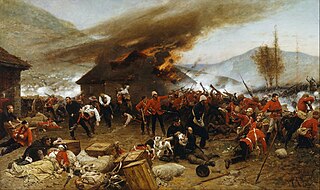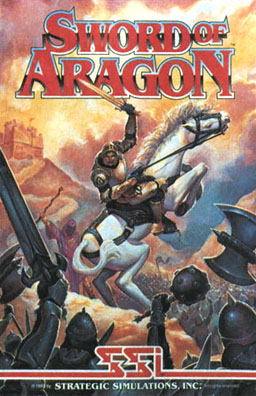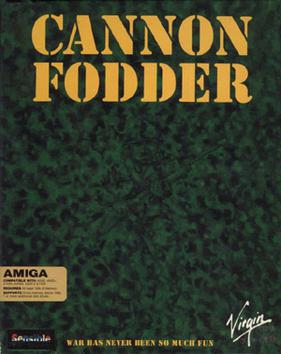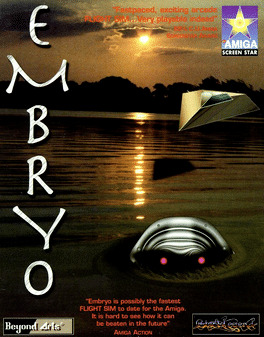
The Battle of Rorke's Drift, also known as the Defence of Rorke's Drift, was an engagement in the Anglo-Zulu War. The successful British defence of the mission station of Rorke's Drift, under the command of Lieutenants John Chard of the Royal Engineers and Gonville Bromhead, of the 24th Regiment of Foot began once a large contingent of Zulu warriors broke off from the main force during the final hour of the British defeat at the day-long Battle of Isandlwana on 22 January 1879, diverting 6 miles (9.7 km) to attack Rorke's Drift later that day and continuing into the following day.

Wonder Boy in Monster Land, known by its original arcade release as Wonder Boy: Monster Land, is a platform video game developed by Westone Bit Entertainment and released by Sega in Japanese arcades in 1987 and for the Master System in 1988, with a number of other home computer and console ports following. The game is the sequel to the 1986 game Wonder Boy and takes place eleven years after the events in the previous game. After enjoying over a decade of peace on Wonder Land following the defeat of the evil King by Tom-Tom, later bestowed the title "Wonder Boy", a fire-breathing dragon called the MEKA dragon appeared; he and his minions conquered Wonder Land, turning it into "Monster Land". The people, helpless due to their lack of fighting skill, call for Wonder Boy, now a teenager, to destroy the monsters and defeat the MEKA dragon. Players control Wonder Boy through twelve linear levels as he makes his way through Monster Land to find and defeat the MEKA dragon. Players earn gold by defeating enemies and buy weapons, armor, footwear, magic, and other items to help along the way.

Curse of the Azure Bonds is a role-playing video game developed and published by Strategic Simulations in 1989. It is the second in a four-part series of Forgotten Realms Advanced Dungeons & Dragons Gold Box games, continuing the events of Pool of Radiance.

Zulu is a 1964 British epic adventure action war film depicting the Battle of Rorke's Drift between a detachment of the British Army and the Zulu in 1879, during the Anglo-Zulu War, in which 150 British soldiers, 30 of whom were sick and wounded, at a remote outpost, held off a force of 4,000 Zulu warriors.

Space Hulk is a 1993 real-time tactical video game for MS-DOS, Amiga and PC-98. The game was based on Games Workshop's 1989 board game of the same name. Set in the fictional Warhammer 40,000 universe, the player directs squads of Space Marines, genetically enhanced armoured soldiers, in their missions to protect the human race from deadly aliens. Space Hulk was developed and published by Electronic Arts, with support from Games Workshop.

Bandit Kings of Ancient China, also known as Suikoden: Tenmei no Chikai in Japan, is a turn-based strategy video game developed and published by Koei, and released in 1989 for MSX, MS-DOS, Amiga, and Macintosh and in 1990 for the Nintendo Entertainment System. In 1996, Koei issued a remake for the Japanese Sega Saturn and PlayStation featuring vastly improved graphics and new arrangements of the original songs.

Hillsfar is a role-playing video game for MS-DOS compatible operating systems, Amiga, Atari ST, and Commodore 64. It was developed by Westwood Associates and published by Strategic Simulations in 1989. It combines real-time action with randomly generated quests and includes elements of the Advanced Dungeons & Dragons fantasy role-playing game. A port to the Nintendo Entertainment System was released in 1993. Hillsfar received mixed reviews from critics.

Aaargh! is a single-player action video game in which the player controls a giant monster with the goal of obtaining eggs by destroying buildings in different cities across a lost island. It was designed for Mastertronic's Arcadia Systems, an arcade machine based on the custom hardware of the Amiga, and was released in 1987. It was ported to a range of other platforms and released on these across 1988 and 1989. Electronic Arts distributed the Amiga version of the game.

Powermonger is a real-time strategy video game developed by Bullfrog Productions and published by Electronic Arts. Originally released in 1990 for the Amiga and Atari ST, it was derived from the Populous engine but presented using a 3-dimensional game map.

Wolfpack is a World War II submarine simulator published by Broderbund in the 1990s, for Amiga, Atari ST, DOS, and Macintosh. It simulates combat actions between wolf packs of German U-boats and convoys of Allied destroyers and merchant vessels in the Battle of the Atlantic.

Waterloo is a battle strategy game by PSS for DOS, Atari ST, Amiga and Acorn Archimedes. It was released in the U.K. by Mirrorsoft in 1989 and in the U.S. by SSI in 1990.

MegaTraveller 1: The Zhodani Conspiracy is a 1990 space science fiction role-playing video game based on the Traveller series and was produced by Game Designers' Workshop licensee Paragon Software for Amiga, Atari ST, and MS-DOS. The game is set within the Official Traveller Universe and features character creation and other aspects of game mechanics compatible with prior Traveller products. The player controls up to five ex-military adventurers whose objective is to save their civilization, the Imperium, from a conspiracy instigated by the Zhodani, a rival spacefaring race, and aided by the actions of a traitor named Konrad Kiefer. Gameplay features real-time planetary and space exploration, combat, trading, and interaction with various non-player characters in eight solar systems containing twenty-eight visitable planets.

Sword of Aragon is a turn-based strategy and role-playing game developed and published by Strategic Simulations in 1989. It is also considered to be of the 4X genre. Set in the fictional land of Aragon, the games casts its protagonist as the duke of a city named Aladda. After assuming rule over the city and avenging his father's death, the protagonist embarks on a quest to unify the land through conquest. Accomplishing this goal entails developing cities, recruiting armies, and directing the troops on the fields of battle to victory. First published for MS-DOS, the game was ported to Amiga machines. Reception towards Sword of Aragon tended to be more positive than negative; reviewers called it an exciting game, but criticized its method of copy protection and cited problems with its documentation. There were also opinions that the game was more of a niche product, catering to hardcore strategists.
Pool of Radiance is a series of role-playing video games set in the Forgotten Realms campaign settings of Dungeons & Dragons; it was the first Dungeons & Dragons video game series to be based on the Advanced Dungeons & Dragons rules.

Cannon Fodder is a shoot 'em up developed by Sensible Software and published by Virgin Interactive Entertainment for the Amiga in 1993. Virgin ported the game to MS-DOS, the Atari ST and the Acorn Archimedes, as well as the Atari Jaguar, Mega Drive, SNES and 3DO. The game is military-themed and based on shooting action with squad-based tactics. The player directs troops through numerous missions, battling enemy infantry, vehicles and installations.

Battle Master is a 1990 fantasy action adventure game designed by Mike Simpson and Simon Jones for PSS and distributed by Mirrorsoft. The game is a fantasy adventure in which the player controls a champion who must battle evil forces to conquer four kingdoms, uniting the four kings' crowns and presenting them to the Watcher in order to restore the world to peace.

Switchblade is a 1989 side-scrolling action-platform run and gun video game originally developed by Core Design and published by Gremlin Graphics in Europe for the Atari ST home computers. The first installment in the eponymous two-part series, the game is set in a dystopian future where players assume the role of Hiro from the Blade Knights as he embarks on a journey to defeat Havok, the main antagonist who broke free from his imprisonment after the sacred Fireblade was shattered into several pieces. Its gameplay consists of run and gun action mixed with platforming and exploration elements, with a main single-button configuration.

Austerlitz is a turn-based strategy video game developed by Personal Software Services and published by Mirrorsoft. It was released in the United Kingdom and Germany for the Amiga, Atari ST and MS-DOS home computers in 1989. It was also re-released in France for Amiga home computers by Mirror Image in 1991. The game is set during the Battle of Austerlitz of the Napoleonic Wars and revolves around Napoleon's forces defending the Austrian village of Austerlitz from the invading army of Alexander I of Russia.

Embryo is a 3D first-person shoot 'em up video game released in 1994 for the Amiga. It was developed by Croatian developer Beyond Arts and published by Black Legend. The player assumes the role of a pilot who mans an advanced fighter in order to drive the aliens invading the Earth away. The game bears semblance to flight simulation games, but is described as pure mayhem without any emphasis on realism.
ZuluWar! is a 1996 computer wargame published by Incredible Simulations. Designed by Jeff Lapkoff and Dennis Bishop, it simulates the Anglo-Zulu War.




















